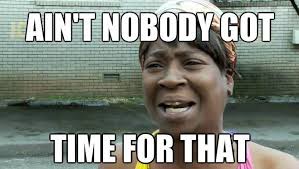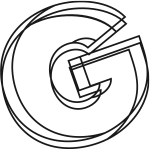In the design process, you can use different methods or a mix of methods to make the product, website or app “better” in the sense of “user centered” – meaning: you get valuable insights into the world of users.
In UX design, we like to draw on the repertoire of methods that have proven themselves in the social sciences. So I thought we’d give a few insights into some of the methods. 🙂
The first part starts with a well-known and popular method – the qualitative user interview – and the basic question: When does such an interview make sense at all?
Inhaltsverzeichnis:
Preliminary: The role of narrative interviews in the design process.
Interviews can play a big role in the design of (digital) products – once a) in the area of the user interview e.g. to “tease out” attitudes or motivations on a certain topic or to get “expert insights” even on complex, unfamiliar topics, or b) in the area of stakeholder interviewsto find out which goals are being pursued from a product/business perspective – in other words: to find out the core of the goals and to check whether there are serious differences of opinion/discrepancies here, i.e.: in which direction it is going.
For the sake of simplicity, I am writing here starting from case a ) – the user interviews.
It’s easy!?
“Let’s just do some quick interviews and we’ll know…”
The interview is a very popular method for obtaining data. By interview I mean here a mostly qualitative data collection method – that is, a narrative, i.e., open-ended, “narrative” oral interview with one or more persons. Qualitative, because here, as I said, I mean a more open-ended survey. There are also fully standardized interview methods, which belong to quantitative data collection methods and have no/less narrative – i.e. qualitative character. In the case of such, the survey is conducted on the basis of a strict through-standardized questionnaire and is not kept flexible/narrative, but these are not dealt with here for the time being.
The interview is so popular because it seems so easy to do. It’s easy – anyone can ask questions, you think. Unfortunately, however, it is not. A lot of things need to be considered if you want to get meaningful insights that will lead on in the process.
Fig 01 First rule of qualitative research
If you’ve ever interviewed before, you’ll have noticed how complex this can be. Conducting an interview is also quite time-consuming – and thus naturally costly. Think of:
- the recruitment of persons
- preparation (decide what kind of interview, prepare questions)
- the actual implementation
- the evaluation (e.g. transcription)
- plus the subsequent analysis
On the other hand, interviews give you insights into why people behave in a certain way, which you often don’t get with purely quantitative tests. It gives you the opportunity to generate new ideas and assumptions about why something might be the way it is (hypothesis generation), which you can then examine more closely and test (hypothesis testing). We will come back to this in more detail in a moment.
This means that you should first clearly weigh up whether an interview will help you to answer your questions at all or whether another method might be better suited to answering the desired questions.
An interview can help you in these cases
1) Exploration of a completely new subject area: If you do not yet have any information about the subject area, i.e. you are at the very beginning and are “poking around” haphazardly in a subject. You intend to gain first insights about a topic and to roughly explore the area what it is about. In the best case, the interview will answer these questions: What, how, why?
2) When the “how” is there, but the “why” is missing: When you already have information, but there are still gaps in your knowledge of certain processes. For example, testing may have been done: you may have noticed a certain behavioral pattern(how/what way people behave) in a usability test or through other observations(user observation, Google Analytics, or questionnaires), but now you are in the dark as to why this behavioral pattern exists. Through an interview, you can try to get to the bottom of this “why.”
3) As useful preparation for a test: You can of course also use interviews to gather material for quantitative, hypothesis-testing tests (aka the “hard facts”, such as questionnaires, usability tests, A/B tests).
In most questionnaires, for example, the answers are already predetermined by the researchers. This is called a “closed response system,” which of course may be an objection to such survey measures. Or: we as UX experts specify the wording and text for products, software programs or on websites, and wonder why it is not understood.
The crux is the same in both cases: You don’t know if these linguistic categories that have sprung from the brains of the researchers/UX experts also correspond to the mental concepts/schemas those of the subjects/test persons/user groups. They may think in completely different “categories”.
Therefore, a quite good method is to conduct interviews with the targeted test group in advance – i.e. before a test (or questionnaire) is developed – about the exact topic of the planned test. Thus, you get insight into the way of thinking, i.e. also into the formulations used by the test candidates. The same effect is often seen, for example, on company websites, which map their competencies/services in their own “internal language”, which is internally self-evident, but as a layman or newcomer in the field, you don’t understand a word.
Here you can make good use of an interview, e.g. to design labels for navigation points in a way that is suitable for the user group: i.e. using a spelling and a choice of words that corresponds to the users’ way of thinking.
This makes sense for e.g. professional group specific questions (experts vs laymen), or for different age groups (children, adults, elderly people) etc.. So the question that is answered for you here is: “How” / In which categories do different groups of people think to describe a fact or a topic?
This is effectively the same approach used in open card sorting.
The research cycle
So you see, interviews have (mostly) a qualitative character and are more suitable for hypothesis generation than for hypothesis testing. These new assumptions you make based on interviews can then be tested more closely in further tests to see if this new hypothesis/assumption holds true.
This works like in a cycle: qualitative exploration – quantitative testing – qualitative exploration – quantitative testing, etc.. 🙂
Fig 02 – The scientific method. Once at the bottom, you can start again from the beginning
Because interviews are so time-consuming, you’ll usually only interview a limited number of people. Suppose you interview 5-10 selected people. Of course, you can’t draw conclusions about the general public from this small number of responses – i.e., you can’t relate these new findings to a certain user group, for example. Never ever.
One also speaks of a low “external validity “* – i.e. the data obtained cannot be generalized.
However, since interviews – as already mentioned – generally have more of an “exploratory” / hypothesis-generating character, i.e. they are first used to “get a feel” for an area, this non-existent generalizability is not quite as important, since hypothesis verification is only arranged in further investigations / tests. So one then checks later: is this really the case, or did the assumptions/insights from the interview just come about by chance?
As a rule of thumb, you can say: Think carefully about whether an interview will really help you with your question. A qualitative interview is always useful if you want to roughly “presort” first. So if you want to get a picture of, say, attitudes and/or motivation on a particular topic. Later in the process, one can then verify this assumption in tests.

Now this all sounds like a lot of effort, and as we all know from many projects, unfortunately time is rarely a given. Of course, you can also run the whole thing “lofi” and “quick and dirty”. Especially when it comes to the mental concepts mentioned above (language, wording), you will quickly gain interesting insights that can broaden your own horizons.
You should only keep in mind that such a “quick & dirty” survey very likely provides a distorted picture of reality, and you should at least document/record/communicate this somehow. This should not become a habit. 🙂
Next time, we’ll take a closer look at the different types of interviews.
Key Takeaways – When to Consider a User Interview:
- Reflect: Is the interview a useful method in my case? What do I want to achieve, what question am I trying to answer?
- Always keep in mind: An interview is more for gaining new insights/assumptions and not for testing assumptions (hypothesis generation instead of hypothesis testing).
- Consider the time required (recruitment, preparation, implementation, evaluation)
- Keep in mind: Data collected is not transferable to the general public due to a small number of persons, which is also randomly selected.
* Validity (validity) is a quality criterion in the social science research process.
Photo credit: https://www.flickr.com/photos/cloneofsnake/14150603002/





